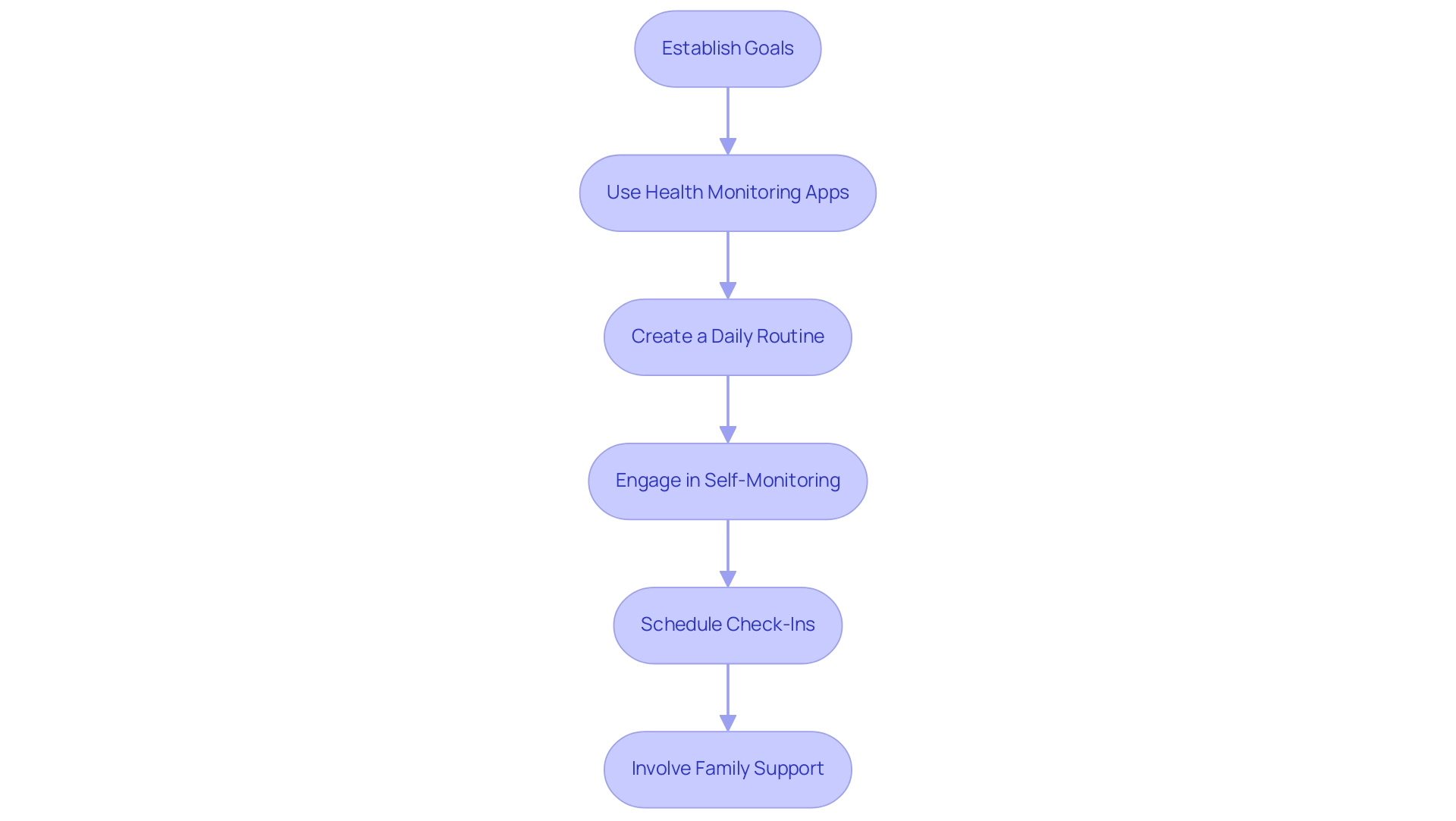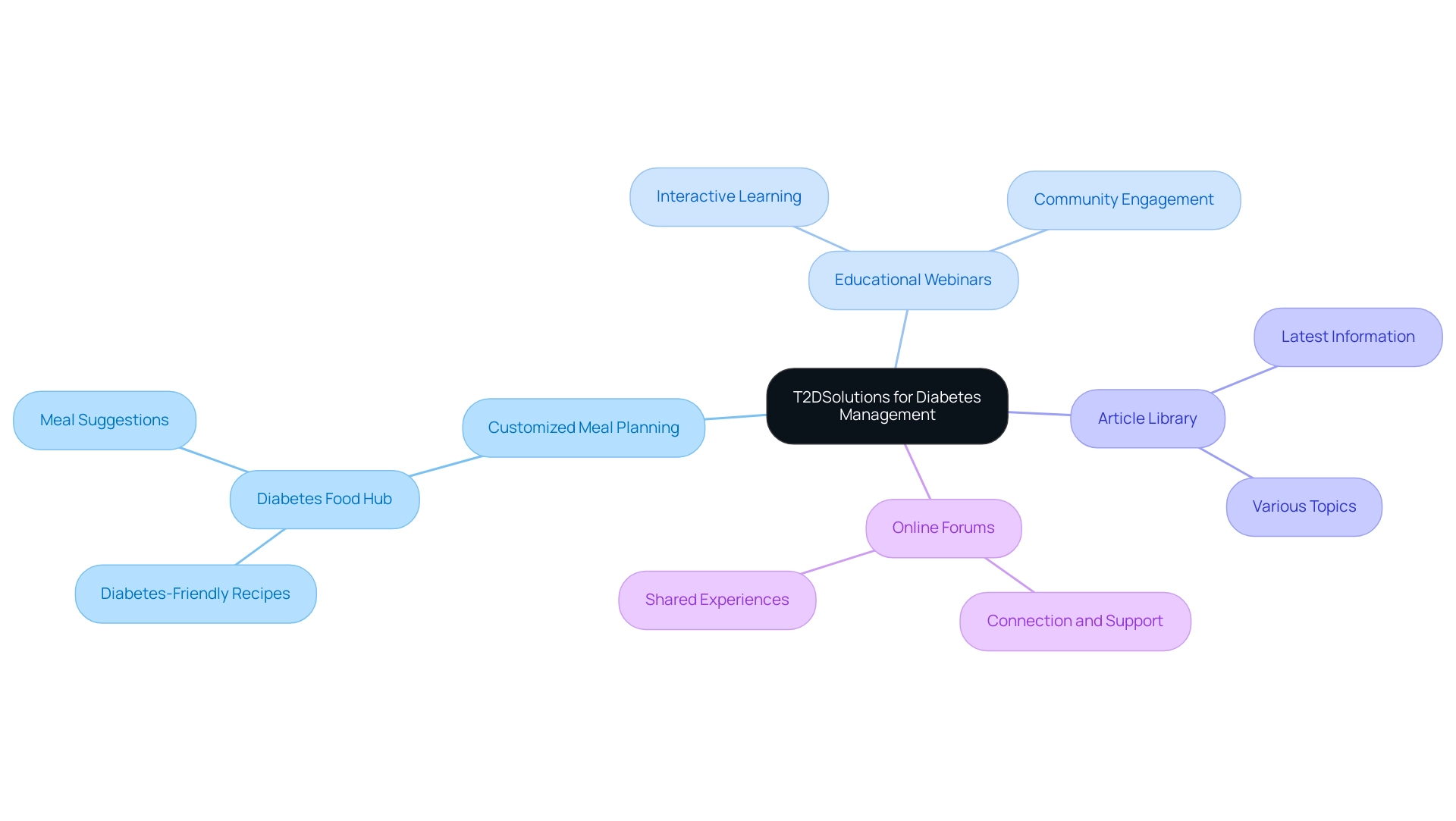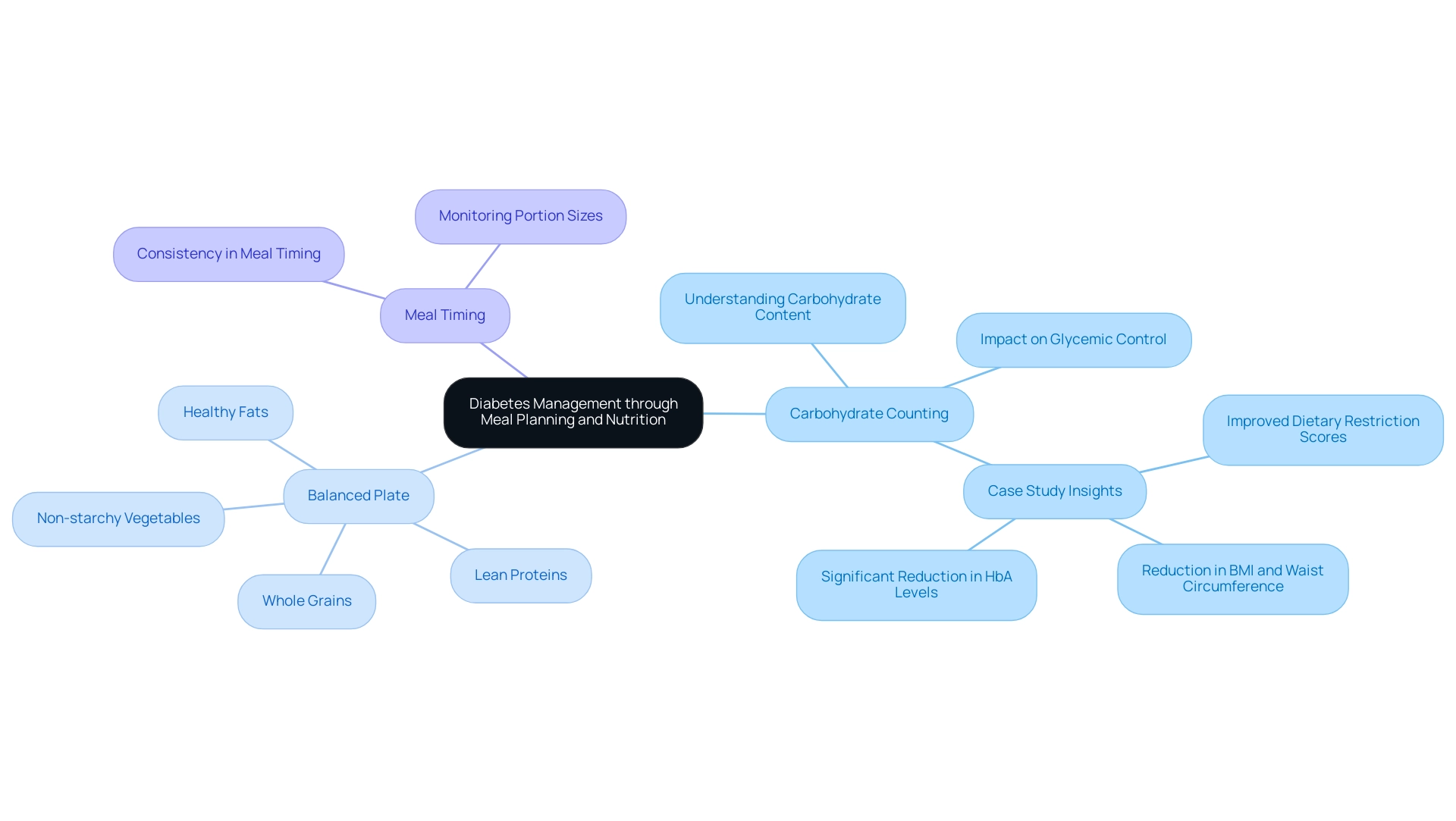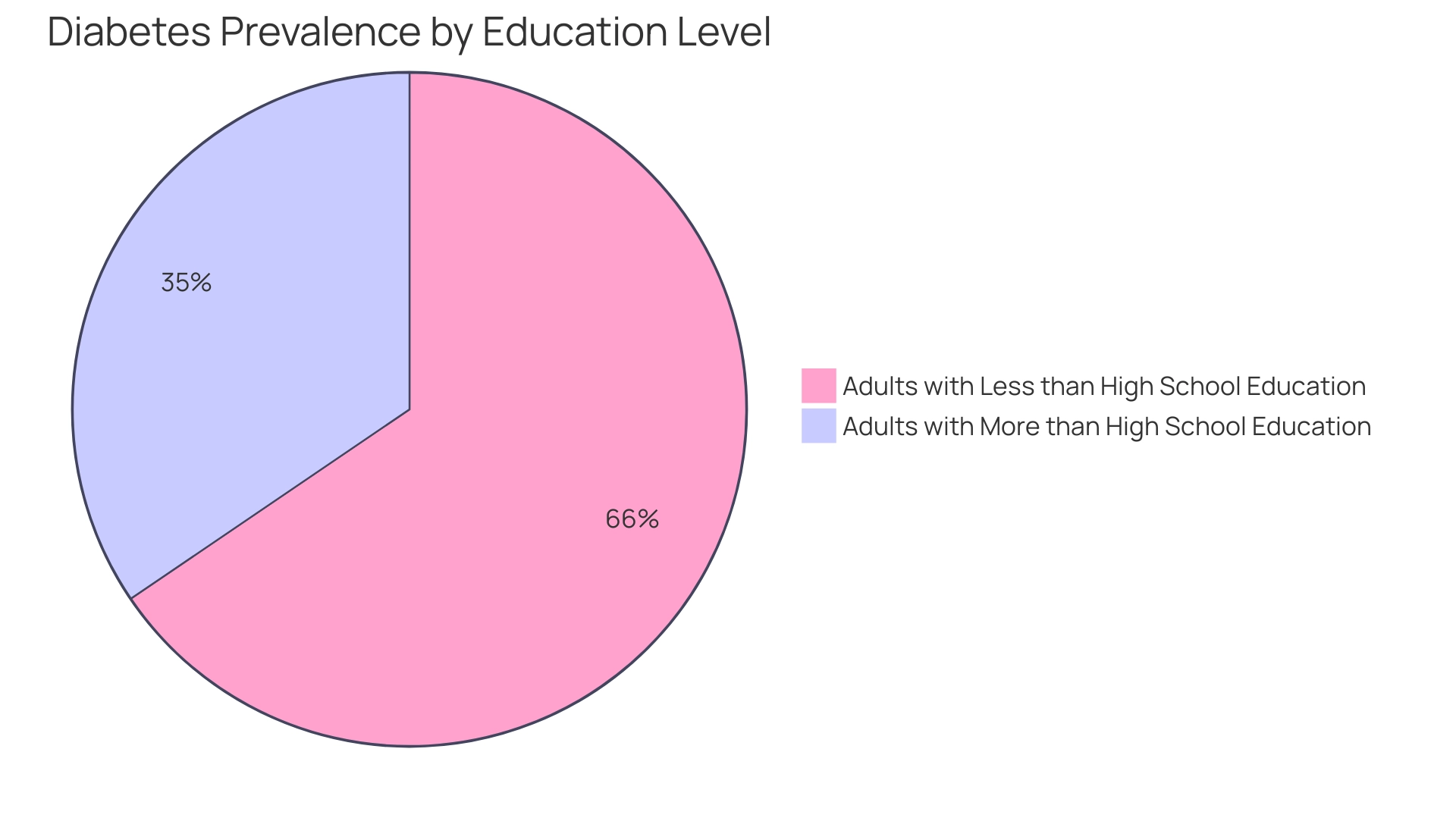Introduction
Navigating the complexities of diabetes management can be overwhelming, especially for those newly diagnosed. The American Diabetes Association (ADA) stands out as a vital resource, offering a wealth of information, guidelines, and support systems designed to empower individuals in their health journeys.
With diabetes affecting a significant portion of the population, understanding how to effectively utilize ADA resources is crucial for achieving optimal care and maintaining a healthy lifestyle. This article explores practical strategies for:
- Integrating ADA guidelines into daily routines
- Highlighting essential tools and resources available
- Underscoring the importance of meal planning
- Staying informed about the latest standards of care
By leveraging these insights, patients can take proactive steps toward managing their diabetes effectively and improving their overall well-being.
Leveraging the American Diabetes Association as Your Primary Resource for Diabetes Management
Are you recently diagnosed with this condition and wondering where to turn for reliable information? The American Diabetes Association guide functions as a crucial support system in managing the condition, offering comprehensive guidelines, educational materials, and assistance for individuals diagnosed with the illness. With a prevalence of the condition at 14.3%, as indicated in recent studies, the significance of the American Diabetes Association guide in addressing this major health concern cannot be overstated.
By utilizing the American Diabetes Association guide and their established standards of care, patients can enhance their understanding of the condition and its associated health risks. Dr. Lara J. Akinbami, M.D., emphasizes that 'the American Diabetes Association guide is essential for ensuring that patients receive the best possible care and support throughout their diabetes journey.' At T2DSolutions, we aim to complement these efforts by providing a comprehensive center dedicated to Type 2 and Type 3 Diabetes education and community support.
As we prepare to launch, we invite you to subscribe to our updates and be the first to know when new resources become available. An exploration of the American Diabetes Association guide's online platform reveals a vast array of information covering strategies for health conditions, available treatment options, and essential lifestyle modifications. Furthermore, engaging in ADA-sponsored events or local support groups can foster connections with others who share similar experiences, promoting a sense of community and shared learning.
Significantly, emergency department visits for hyperosmolar hyperglycemic syndrome emphasize the real-world consequences of controlling blood sugar levels; these visits slightly rose from 26,000 in 2019 to 27,000 in 2020, highlighting the necessity of adhering to the American Diabetes Association guide to avert such emergencies. T2DSolutions is dedicated to empowering recently diagnosed patients by offering access to innovative insights and community support as they navigate their journey toward effective health control.

Practical Strategies for Implementing the ADA Guide in Daily Diabetes Management
As T2DSolutions launches as a brand new site dedicated to being a comprehensive support hub for Type 2 and Type 3 conditions education and community assistance, it is essential to effectively incorporate the American Diabetes Association guide into your daily care. We invite you to subscribe for updates as we continue to develop our resources. Begin by establishing realistic and achievable goals that align with the ADA's recommendations.
Using a health monitoring application can greatly assist in tracking your blood glucose levels, medication adherence, and dietary choices. However, it is important to note that 39% of individuals lack belief in mHealth applications for diabetic self-management, highlighting the need for continued education on their benefits. These applications have been demonstrated to enhance medication adherence among Type 2 patients, although further research is needed to verify their long-term effectiveness.
It is essential to create a structured daily routine that includes regular physical activity, in line with ADA suggestions. Engaging in self-monitoring of blood glucose levels allows you to discern how various foods and activities influence your glycemic control. Furthermore, consider scheduling regular check-ins with your healthcare team to review your progress and make necessary adjustments to your care plan.
As noted by Zhiguang Zhou, 'Family support through the LCCP family portal is effective for glycemic control and self-management behavior improvement in Type 2 patients,' underscoring the importance of involving family in your management journey. Additionally, the demographic details from various studies indicate a broad representation of health conditions among participants, reinforcing the effectiveness of these strategies across diverse experiences. By integrating these strategies into your routine, you can foster a proactive approach to managing your condition effectively.
The T2DSolutions Content Team is dedicated to offering continuous support and assistance as we develop, ensuring that you have the information necessary to succeed.

Exploring Tools and Resources Offered by the ADA for Effective Diabetes Management
T2DSolutions is proud to present itself as a comprehensive support center dedicated to assisting individuals managing Type 2 and Type 3 blood sugar conditions and education. Building upon the robust array of tools provided by the American Diabetes Association guide, T2 Solutions aims to empower newly diagnosed patients with essential resources tailored specifically to their needs. Key features of T2DSolutions will include:
- Customized meal planning tools, leveraging the Ada's Diabetes Food Hub, which offers diabetes-friendly recipes and meal suggestions.
- Access to Ada's educational webinars and workshops, creating opportunities for interactive learning and community engagement.
- An extensive library of articles covering various topics, ensuring that patients have access to the latest information in managing their condition.
- Engaging with the Ada's online forums to foster connection and support among individuals facing similar challenges.
Furthermore, the American Diabetes Association guide, specifically the 'Standards of Medical Care in Diabetes,' will serve as essential guidelines, helping patients navigate the complexities of managing their condition. With the prevalence of diagnosed blood sugar disorders rising from 6.3% in 2004 to 8.3% in 2021 and approximately 16.8 million emergency department visits related to this condition reported in 2020, T2 Solutions recognizes the critical need for comprehensive support and education in managing this issue. Our dedication is to offer a comprehensive method for dealing with this condition, guaranteeing that newly diagnosed patients possess the support they require to flourish.

The Role of Meal Planning and Nutrition in Diabetes Management
Efficient oversight of blood sugar levels is greatly affected by meal planning and nutrition. A foundational concept is carbohydrate counting, which equips individuals to comprehend how various foods affect blood sugar levels. Recent research has shown that participants assessed meal trays with carbohydrate counts varying between 68 and 76 g, highlighting the importance of understanding carbohydrate content in meals.
The American Diabetes Association guide advises constructing a balanced plate that incorporates diverse food groups, including:
- Non-starchy vegetables
- Lean proteins
- Whole grains
- Healthy fats
Utilizing the American Diabetes Association guide for meal planning resources can facilitate the creation of a weekly menu tailored to individual dietary requirements. It is also essential to monitor portion sizes and maintain consistency in meal timing, as these practices contribute to stabilizing blood glucose levels.
A case study titled 'Effects of Carbohydrate Counting in Type 1 Diabetes' reported that carbohydrate counting improved dietary restriction scores and was associated with a modest decrease in BMI and waist circumference, alongside a significant reduction in HbA levels among patients who consistently used carbohydrate counting. J.K.H., the guarantor of this work, highlighted the significance of this research, stating that it offers valuable insights into the effectiveness of carbohydrate counting in the control of blood sugar. Overall, recent findings highlight the increasing significance of carbohydrate counting in the treatment of blood sugar conditions, demonstrating its efficacy in improving glycemic control and overall quality of life for patients.
As T2DSolutions enhances its resources, there will be chances to combine these established practices with new content, further supporting education and care.

Staying Informed: The Latest Standards of Care and Research from the ADA
Staying updated with the latest standards of care and research from the American Diabetes Association guide is crucial for effective condition oversight. For example, from 2017 to 2020, prediabetes awareness among Hispanic adults was only 20.9%, emphasizing the urgent need for education and awareness in controlling blood sugar levels. To achieve this, it is advisable to routinely review updates published in the American Diabetes Association guide, which provides comprehensive insights into evolving treatment approaches and strategies.
Additionally, a case study titled 'Impact of Education and Income on Diabetes Prevalence' shows that the prevalence of diagnosed conditions varies significantly by education level, with:
- 13.1% of adults with less than a high school education diagnosed
- 6.9% among those with more than a high school education
This illustrates the real-world implications of socioeconomic factors on the management of blood sugar conditions. Participation in professional conferences and webinars focused on managing this condition offers valuable opportunities for learning and networking with specialists in the field.
Furthermore, subscribing to the American Diabetes Association guide newsletters ensures timely access to new research findings and treatment options. As Dr. Lara J. Akinbami, M.D., states, 'Staying updated with the latest American Diabetes Association guide is crucial for optimizing care for those with diabetes-related issues.' Participating in ongoing education not only empowers patients but also allows them to adjust their plans in response to emerging insights, ultimately fostering better health outcomes.
T2DSolutions provides a range of resources and community support to further improve diabetes care. By participating in T2DSolutions' upcoming events and utilizing their educational materials, patients can stay informed and connected, thereby improving their overall management strategies.

Conclusion
Navigating the complexities of diabetes management requires a proactive approach and a solid foundation of knowledge. The American Diabetes Association (ADA) serves as an invaluable resource, providing essential guidelines, tools, and support that empower individuals to manage their condition effectively. By integrating ADA recommendations into daily routines, utilizing available resources, and prioritizing meal planning, individuals can enhance their health outcomes and overall quality of life.
Utilizing innovative tools like diabetes management apps and meal planning resources can streamline the process of tracking progress and making informed dietary choices. Furthermore, understanding the significance of carbohydrate counting and maintaining a balanced diet is crucial in stabilizing blood glucose levels. Engaging with community support through ADA-sponsored events and local groups fosters connections that can be instrumental in navigating the challenges of diabetes management.
Staying informed about the latest standards of care and research is essential for adapting management strategies to evolving insights. Continuous education not only empowers patients but also enhances their ability to make informed decisions regarding their health. By leveraging the comprehensive resources offered by the ADA and initiatives like T2DSolutions, individuals can take charge of their diabetes management journey, ultimately leading to improved health and well-being.



